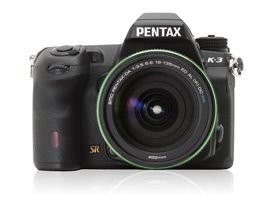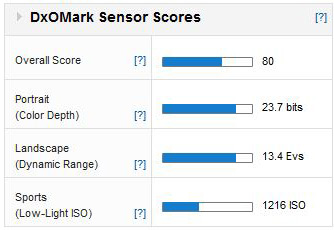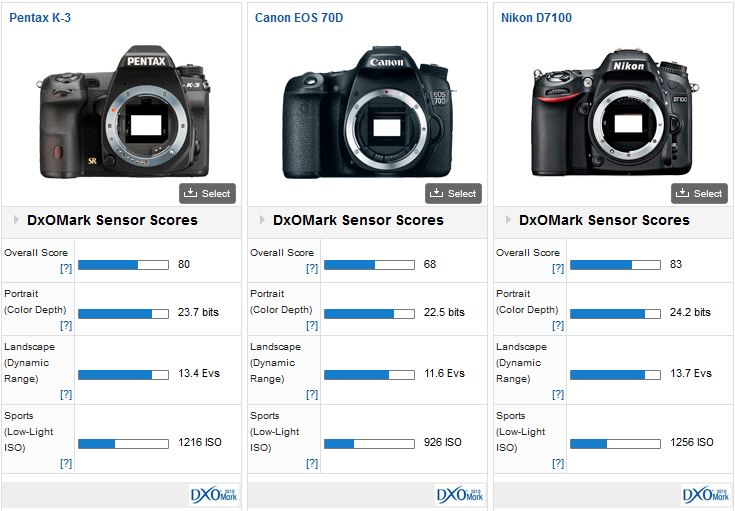Introduction
The Pentax K-3 is the new top-of the range model and replacement to the Pentax K5-II and K5-II S models introduced in 2012. Although this is the first Pentax DSLR to adopt a stabilized 24-Mpix APS-C CMOS sensor it’s likely to be known for its unique user-selectable AA (anti-aliasing) filter feature. This combines the attributes of both the K-5II models in one, allowing the user to control the amount of moiré correction required depending on the intended use.
The K-3 achieves this not by using an optical filter as in the past, but by simulating the effect through deliberate vibration of the sensor during capture. While switching the filter off delivers maximum clarity and sharpness, two other settings offer a balance between that and moiré-reduction.
Besides the innovative moiré-reduction option, the K-3 adopts features associated with a camera intended for professional use. It has a weather sealed body, as you might expect (all Pentax DSLRs have), but the K-3 offers continuous shooting at up 8.3fps, an advanced 27-point AF system (with sensitivity in light levels as low as -3EV) and a glass pentaprism with approximately 100 % viewfinder coverage and 0.95x magnification.
Video capture is also high on the list of priorities from the firm and the K-3 includes full HD (1920×1080) video at 60i/50i/30p/25p/24p in MPEG-4 AVC/H.264 and has both headphone and mic ports. The K-3 is available now at $1,299.
Key specifications:
- 24Mp-x APS-C MOS sensor
- In-body image stabilization (works with any lens)
- Selectable, three-stage low-pass filtering
- 27 Point (23-cross type) AF system (EV -3 to 18)
- 100 % viewfinder coverage, 0.95x magnification (50mm f1.4, at infinity)
- 3.2-inch1037k dot LCD
- 1080 video at 60i/50i/30p/25p/24p in MPEG-4 AVC/H.264(MOV)format
- 1/8000thsecond max shutter speed, 1/180thsec maximum flash sync
- 8.3fps maximum continuous shooting
- Weather-sealed magnesium-alloy shell
- Dual SD memory slots
In all of our tests with the filter off, the Pentax K-3 achieves a high ranking coming in 15th place overall with a DxOMark Sensor of 80 points.
However, this is slightly lower than expected. Had the K-3 offered an ISO80 setting like its predecessors then the score would almost certainly have been on a par with them, click through to see the comparison Pentax K3 vs Pentax K5 II vs Pentax K5 IIs.
As a result the K-3 has slightly lower scores for Low ISO individual metrics (Portrait and Landscape), but the differences are marginal, with perhaps the exception of dynamic range where the K-3 has -0.7 of a stop less than the K-5II models overall.
Pentax K-3 Versus Canon EOS 70D Versus Nikon D7100: One of the best performing of its type
The slightly lower scores from the K-3 mean it ranks slightly behind that of its closet rival bearing a similar 24-Mpix sensor, the Nikon D7100, but it fares well against the Canon EOS 70D.
The Pentax has +2/3 stop improvement in color depth over the Canon but around -1/3 stop less than the Nikon. Bigger differences can be seen in dynamic range where the K-3 has almost +2 stops advantage at base ISO over the Canon, and just less than -1/3 stop compared with the Nikon. In low light, the capabilities of the Pentax and Nikon are equal but you would be hard put to tell the +1/3 stop gain over the Canon in real world use.
Pentax K-3 Versus Sony SLT Alpha 58 Versus Sony SLT Alpha 77: Improvements over older semi-pro models
Alongside the older 20-Mpix Sony SLT A58 and the A77, which has a similar 24-Mpix CMOS sensor, the Pentax has an advantage in performance, particularly against the former model.
Compared with the A58 the K-3 has a +1/3 stop benefit in color depth and just under a +1 stop wider dynamic range but there’s nothing in it between it and the A77. Where the Pentax leads against the A77 is in its low-light performance.
However, while the K-3 has around +2/3 stop advantage over that and the A58, much of the difference in low-light capabilities can be attributed to the SLT mirror. Nevertheless, the K-3 maintains the lead in our sensor performance rankings, while offering some unique and promising features.
With its quasi AA-filter design, the introduction of the Pentax K-3 signals a change in direction from makers offering a choice of models differing only by their filter-design. Not only does it simplify the choice at the time of purchase there is the potential to save money with no real need to buy a second body for the slightly different functionality. If, however, a back up is required (as is usually the case if being used professionally) then the user can benefit from the identical layout and menus, while having two bodies with the same capabilities.
We’ve not yet assessed the resolving power of the sensor but with specific regard to color, DR and low light performance the quality of output is unaffected by the new AA feature, making the Pentax K-3 sorely tempting choice for enthusiasts and professionals alike.









DXOMARK encourages its readers to share comments on the articles. To read or post comments, Disqus cookies are required. Change your Cookies Preferences and read more about our Comment Policy.